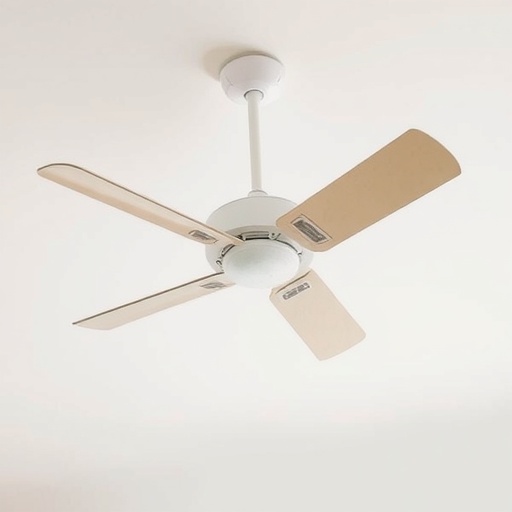As climate change intensifies, understanding the limitations and effectiveness of common household cooling methods becomes paramount, especially for vulnerable populations such as older adults. A recent study conducted by researchers at Griffith University provides a comprehensive evaluation of ceiling fan use as a cooling intervention for bed-resting older adults subjected to prolonged indoor heat conditions typical of summer in South East Queensland, Australia. This investigation sheds new light on how ceiling fans influence core body temperature and physiological stress during heat exposure, with implications for public health recommendations and cooling strategies in aging populations.
This study addresses an urgent question: can ceiling fans alone sufficiently mitigate the physiological strain induced by indoor heat exposure? Using an observational approach, the researchers exposed older adult participants to controlled indoor environments set at 31°C with 45% relative humidity — parameters reflecting common summer indoor conditions in subtropical climates. The participants remained bed-resting throughout the exposure duration, replicating a scenario frequently encountered by frail elderly individuals or those with limited mobility. This setup allowed for precise monitoring of core temperature fluctuations and cardiovascular responses under ceiling fan cooling.
Quantitative data from the study demonstrate that while ceiling fans do offer some respite from heat stress, their impact is modest and insufficient as a standalone cooling measure when ambient temperatures surpass 31°C. Specifically, the use of ceiling fans reduced peak core body temperature by approximately 0.2°C and decreased heart rate by around five beats per minute. Although statistically significant, these reductions fall short of fully alleviating the heat-induced physiological burden. Core temperature elevations nearing 1°C and heart rate increases by 22 beats per minute were still observed despite fan usage, indicating persistent thermal strain in these conditions.
Physiologically, elevated core temperature accelerates metabolic stress responses and cardiovascular workload, which can lead to serious health complications in older adults, such as heat exhaustion or heat stroke. Elevated heart rate signifies the body’s attempt to enhance blood flow for heat dissipation, imposing additional cardiac strain. The modest cooling effect imparted by ceiling fans is insufficient to counterbalance these risks above certain temperature thresholds, underscoring the necessity for more robust cooling solutions.
The study further emphasizes that the efficacy of ceiling fans diminishes as indoor temperatures increase beyond 33°C. In fact, beyond approximately 40°C, the use of ceiling fans can paradoxically exacerbate heat stress. By circulating hot air, fans may transform indoor spaces into convection ovens rather than cooling environments, increasing thermal discomfort and physiological strain. This counterproductive effect can manifest as symptoms including fatigue, dizziness, and impaired cognitive function, potentially precipitating acute heat-related illnesses if exposure continues.
Importantly, the research advocates for a combined cooling approach, suggesting that ceiling fans be used in tandem with air conditioning systems. Setting air conditioners to a moderate temperature of around 26°C while employing ceiling fans can optimize comfort, minimize electrical consumption, and reduce thermal strain on the body. This integrated strategy balances energy efficiency with effective heat mitigation, particularly crucial for older adults who are vulnerable to overheating and heat-related morbidity.
The relevance of this research escalates against the backdrop of a warming climate and increasing frequency of intense heatwaves worldwide. Older adults represent a high-risk demographic due to physiological changes associated with aging, such as reduced thermoregulatory capacity and pre-existing health conditions. Therefore, accessible, sustainable, and effective cooling interventions are vital components of adaptive strategies to protect public health during periods of extreme heat.
However, the limitations of ceiling fans as a singular intervention highlight the need for policy initiatives to improve access to effective cooling technologies, primarily air conditioning, which remains the gold standard for heat mitigation. Government subsidies and programs that expand affordability and accessibility of powerful cooling solutions are critical for safeguarding the health of the most vulnerable segments of the population, particularly in underserved communities where heat exposure risks are compounded.
This Griffith University research contributes valuable evidence that public health recommendations should be predicated upon interventions proven to effectively reduce physiological strain, rather than relying on cooling methods whose benefits are incremental or conditional. Ceiling fans should be promoted as part of a nuanced heat management framework that incorporates environmental monitoring, combined cooling technologies, and targeted support for vulnerable individuals during heatwaves.
Overall, this study illuminates the complex interplay between ambient temperature, cooling modalities, and human physiological responses in older adults. It clarifies that while ceiling fans provide partial relief during moderate heat exposure, they cannot fully substitute for air conditioning in preventing heat-induced health risks, especially under prolonged or intense heat conditions. These insights are crucial as societies worldwide grapple with the escalating health challenges posed by climate change-driven extreme heat events.
As the global population ages and heatwaves become more frequent and severe, the imperative for evidence-based, practical, and equitable cooling solutions intensifies. Integrating ceiling fan strategies with air conditioning, fostering energy-efficient cooling technologies, and ensuring access for vulnerable populations will be central to enhancing resilience and reducing heat-related morbidity and mortality in the years ahead.
Subject of Research: People
Article Title: Effect of Ceiling Fans on Core Temperature in Bed-Resting Older Adults Exposed to Indoor Overheating
News Publication Date: 27-Sep-2025
Web References: https://agsjournals.onlinelibrary.wiley.com/doi/10.1111/jgs.70109
References: DOI: 10.1111/jgs.70109
Keywords: Heat waves




